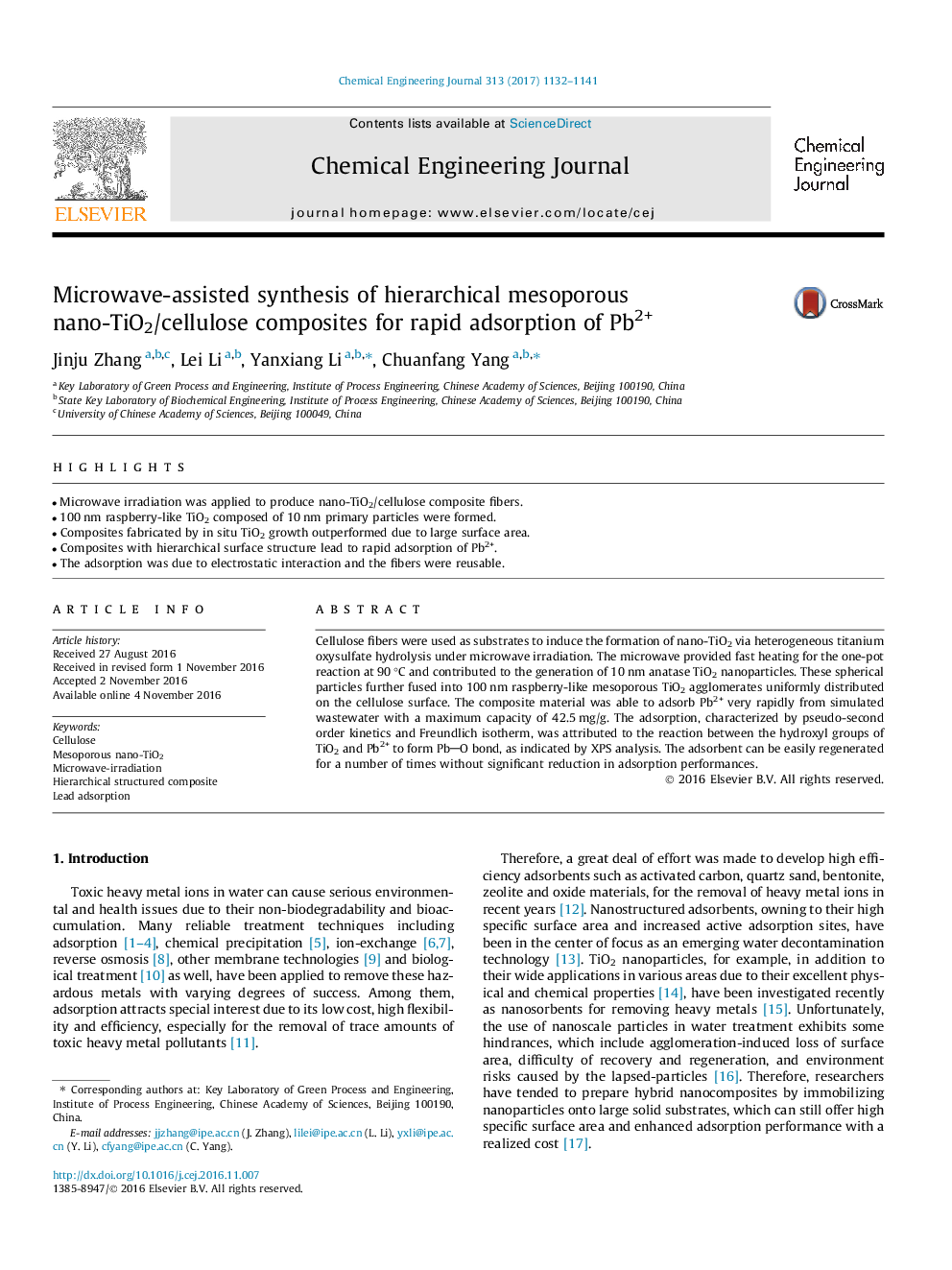| Article ID | Journal | Published Year | Pages | File Type |
|---|---|---|---|---|
| 6466679 | Chemical Engineering Journal | 2017 | 10 Pages |
â¢Microwave irradiation was applied to produce nano-TiO2/cellulose composite fibers.â¢100 nm raspberry-like TiO2 composed of 10 nm primary particles were formed.â¢Composites fabricated by in situ TiO2 growth outperformed due to large surface area.â¢Composites with hierarchical surface structure lead to rapid adsorption of Pb2+.â¢The adsorption was due to electrostatic interaction and the fibers were reusable.
Cellulose fibers were used as substrates to induce the formation of nano-TiO2 via heterogeneous titanium oxysulfate hydrolysis under microwave irradiation. The microwave provided fast heating for the one-pot reaction at 90 °C and contributed to the generation of 10 nm anatase TiO2 nanoparticles. These spherical particles further fused into 100 nm raspberry-like mesoporous TiO2 agglomerates uniformly distributed on the cellulose surface. The composite material was able to adsorb Pb2+ very rapidly from simulated wastewater with a maximum capacity of 42.5 mg/g. The adsorption, characterized by pseudo-second order kinetics and Freundlich isotherm, was attributed to the reaction between the hydroxyl groups of TiO2 and Pb2+ to form PbO bond, as indicated by XPS analysis. The adsorbent can be easily regenerated for a number of times without significant reduction in adsorption performances.
